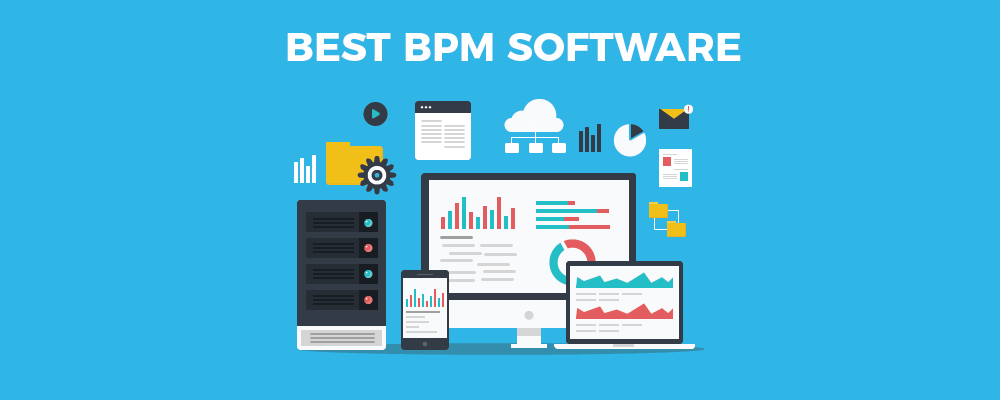For a company to succeed, it has to have a streamlined and efficient system that promotes reliability and consistency. Especially in this digital age, adopting new technology to improve business processes for enhanced performance is crucial. This is where BPM enters the picture.
What is BPM?
BPM stands for Business Process Management. It is a systematic practice of mapping, analyzing, improving, and optimizing business processes to align them with the company’s objectives and goals. It is a modern-day approach that companies can use to keep up with the dynamic tech-driven ecosystem and fast-paced business environment.
What are the benefits of using BPM tools?
There are many good reasons why your company should invest in BPM tools. Below are examples of their key benefits:
- Enhanced organizational management and control
- Improved communication and collaboration
- Automated workflow
- Reduced errors and risks
- Optimized steps and processes
- Increased employee happiness
Enhanced organizational management and control
Keeping track of every employee and process in mid-sized to large-sized organizations is not as easy as in small-sized ones with less than a dozen staff members. With many different departments, teams, branches, or locations, overseeing everything can be quite challenging. With BPM tools, you have a way to access all the information that you need to manage and control operations every day.
Improved communication and collaboration
Organizations that often have projects that require communication and collaboration across teams, departments, or branches can benefit greatly from BPM. With it, contacting others, sharing files, and accessing them can be done more quickly and conveniently. There is no longer a need to meet up in person for meetings and other concerns.
Automated workflow
There are certain company tasks that are better handled by software tools rather than by humans. Collecting client or customer information, sending out follow-up emails, and answering frequently asked questions are just a few examples of processes that can be assigned to BPM software. That way, you can save costs and resources and your staff can focus on more important tasks.
Reduced errors and risks
Errors can happen at any time and disrupt company operations. Whether they are minor or significant, a certain amount of time, effort, and other resources can go to waste. They have to be avoided as much as possible to not experience delays and losses. With BPM, organizational errors can be reduced by using tools that allow for enhanced monitoring and management. Inefficiencies can be spotted early on and the necessary changes and adjustments can be made before problems get worse.
Optimized steps and processes
Having tools for enhanced management and control of company operations allows for the quick identification of steps and processes that are outdated or inefficient. Once these aspects of the operations are determined, an appropriate plan can be created and the necessary actions taken. With BPM, optimization can be achieved by improving existing processes and creating new ones.
Increased employee happiness
The levels of efficiency and performance of your company are closely linked to the levels of happiness and satisfaction of your employees. In workplaces that have clear and defined structures, employees tend to have greater satisfaction and productivity. The primary reason for this is because the confusion, hesitancy, and uncertainty about their assigned tasks is eliminated. With BPM software, companies can be transparent about their processes, responsibilities, and objectives to their employees.
